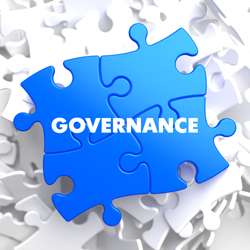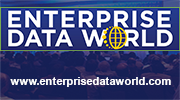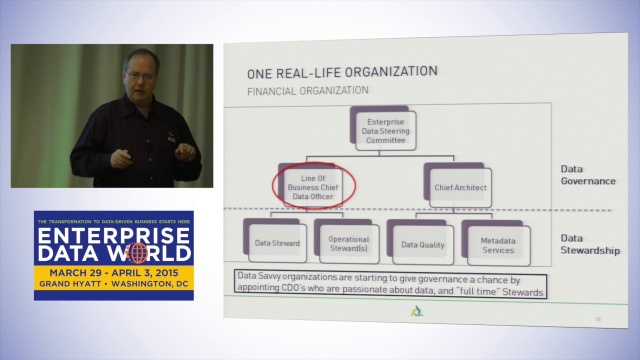 An industry pro since 1979, Ian Rowlands assumed that by now Data Governance processes would be done in fairly standardized, complete ways. Instead, he has discovered that while processes are defined and understood, he says they are “more honored in the breach than the observance.” He spoke at the DATAVERSITY® Enterprise Data World 2015 Conference about this problem. Mr. Rowlands is the Vice President of Product Management for ASG Software Solutions, where he and his colleagues are dedicated to issues around Data Governance and Metadata.
An industry pro since 1979, Ian Rowlands assumed that by now Data Governance processes would be done in fairly standardized, complete ways. Instead, he has discovered that while processes are defined and understood, he says they are “more honored in the breach than the observance.” He spoke at the DATAVERSITY® Enterprise Data World 2015 Conference about this problem. Mr. Rowlands is the Vice President of Product Management for ASG Software Solutions, where he and his colleagues are dedicated to issues around Data Governance and Metadata.
While working with companies responding to increased regulation, Rowlands has gained significant insight into the state of Data Governance theory and practice with “real-life” experiences. Using an informal survey of his contacts, he contrasted successful approaches with less successful efforts. His research drew him to explore tooling, the core set of capabilities needed for IT and Data Governance, and the part of Big Data in Governance.
How the Tooling for Data Governance is Changing
His first surprise, he said, was a big one: “There is much less real, formalized, disciplined Data Governance process going on than I ever expected to find.” Even banking clients are not uniformly compliant in practice. Rowlands recommended becoming familiar with BCBS239, the first piece of regulation that explicitly defines Data Management and Data Governance requirements as related to the business and IT.
He also found that Metadata Management was not complete in most organizations. One area where practice is in much better shape is Diagnosis and Remediation.
Rowlands highlighted four areas where Data Governance is changing:
- Increased regulation and costs of compliance make governance visible at boardroom level.
- Rapidly growing data volumes are changing approaches to Governance focus and sequencing, a concern because “the technology is seriously ahead of the practice.”
- Increasing maturity is solidifying understanding of the toolkit.
- Tooling processes still show wide variation as well, not just in financial terms.
He said, “We all know what we should be doing, even if we’re not doing it, yet processes show huge and discomfiting variation.”
The Shifting Governance Driver
Regulations driving Data Governance are multitudinous and sometimes conflicting, Rowlands said. There appear to be more than a million regulations that affect data – some conflicting with others. Data Governance started as a cost management initiative, with extended timelines, staff shortages, and expensive infrastructure. The driver then moved to Risk Avoidance, with a tsunami of regulation, reputation damage and repair costs, and now, he said:
“We are seeing a shift toward business outcomes as the driver, [where you] choose the things that you work on in Data Governance according to their impact on the business bottom line. That’s a really healthy position to be in.”
He went on to say that leading edge Data Governors should show senior executives how data is contributing to the value of the business by giving them a dashboard that shows how good data can ensure ethical treatment of vendors, customers, and clients and how it contributes to risk avoidance. “Imagine your CEO being able to say, ‘You know all those IT people? They’re not getting me in trouble, they’re contributing to the business and they’re making us look good to our customers!’”
Organizational Issues
Rowlands said that organizations used to struggle with IT and business over Data Governance, but he’s now seeing more clarity with business owning business issues, IT owning tech issues with direction coming from Executive Management. This is an area where theory and practice are working well. He showed a slide depicting the structure of a “Real-Life Financial Organization,” with an Enterprise Data Steering Committee, and each line of business having its own Chief Data Officer. Each line of business also has Data Stewards who are business Subject Matter Experts and Operational Stewards who do issue and process management, with a Chief Architect managing a separate area that provides data quality and metadata services. Rowlands said this company has a very clear understanding that Data Stewardship and Data Governance are two separate things. He emphasized that anyone saying that by doing Data Stewardship, you’re doing Data Governance is telling you a “black lie out of hell!” Smart organizations:
“Give governance a chance by appointing full-time Data Stewards who, by their nature, are passionate about data. It has been suggested that Data Stewardship is something you can do on the side, it’s a part-time job, it’s part of what you do. That model is doomed to failure.”
Process Observations
Most people understand the pieces that are necessary, but he said, “How they fit together is still a subject of great confusion.” The DMBOK “has a wheel graphic with all these processes and Data Governance in the middle. I believe that is correct. Data Governance is the manager of all these areas.”
Rowlands expressed excitement with the discovery of an emerging model being used as a tool for prioritization. This model stresses the importance of first understanding key business elements, then asking what numbers are essential for compliance and success, finding how they are described in business terms, determining the glossary, the constraints, and then defining the important relationships.
He said that having good reports involves an essential underlying level of detail, without which “it’s like saying I know I’m sick but I don’t know why.” Popular categories for Data Governance reports include inventory, documentation, traceability, accuracy, process, and reliability.
Big Data as a Disruptive Factor
Using a slide depicting a herd of elephants, Rowlands illustrated the disruptive nature of Big Data. There are several distinct architectures that fundamentally change the infrastructure platform, he said. These changes can save money, but they are disruptive. This impact forces changes in key areas (classically characterized by IBM): Volume, Velocity, Variety, and Veracity. Big Data Volumes force selectivity in governance, Big Data Velocity changes the timescale for governance response, Big Data Variety massively expands governance complexity, and Big Data projects start from a business problem, so Veracity requirements are different, he said.
Business Elements and Technical Elements Linked to Characteristics
Big Data projects often start with a defined business problem, Rowlands said, presenting a model of inter-related concepts leading to good Governance and successful outcomes:
Cascading Characteristics in Four Layers
- Layer 1: Data Quality Tolerance Level – Conceptual Data Element
Critical Business Element – in relationship with Critical Business Process - Layer 2: Value Meanings – Conceptual Data Element
- Layer 3: Used and Permissible Value
Context Sensitive Data Element – in relationship with Big Data Analysis - Layer 4: Data Defects – Context Sensitive Data Element – in relationship with Big Data Analysis
He said the requirements are the same for small and Big Data environments, with different technology. “Don’t let anybody spoof you into believing that the governance requirements are fundamentally different. They are not.”
Data Management Disciplines are Consolidating and a Business-Focused Data Governance Platform is Emerging
His discussions with customers show a convergence of Data Management practices, a focus on business outcome-driven governance, an understanding that tooling should hide complexity, and an understanding that “governance is central but separate.” A reference architecture for tooling is emerging with a separation of layers into Enablement, Execution, Prioritization, and Management. Rowlands cautioned that focusing on only one or two layers is not enough: “Just doing management without doing the hard work underneath is like putting lipstick on a pig.”
Technology Outstrips Process: How to Win the Data War
Rowlands stressed that a formal, structured plan for Data Governance is essential, whether it’s an excel sheet or paper. He presented a final slide with a series of boxes outlining steps to success:
- Data Governance is an immature discipline. Don’t “govern” without a plan.
- Design and populate the Data Governance reference architecture.
- Do everything you can to educate executives about Big Data risk: “They do not get it, and it is perilous.”
- Educate them about the value of Data Governance.
- Parse regulations for Data Governance ‘standards’ that apply to your particular business.
- Shift from defensive Data Governance to offensive Data Promotion: “We haven’t yet done a good enough job of communicating how valuable data is to the business.”
- Shift from how to avoid risk and how to avoid cost and “get such a clear understanding of our data that we can go to parts of the business and say, ‘Look, here’s an asset that you can use to improve your contribution to the bottom line.’ Then you’re a hero (or heroine). That’s probably the most important box on the whole chart.”
Register for the Enterprise Data World 2016 Conference Today

Here is the video of the Enterprise Data World 2015 Presentation:

